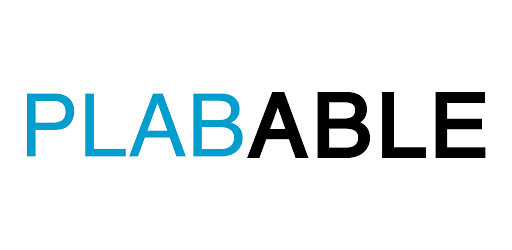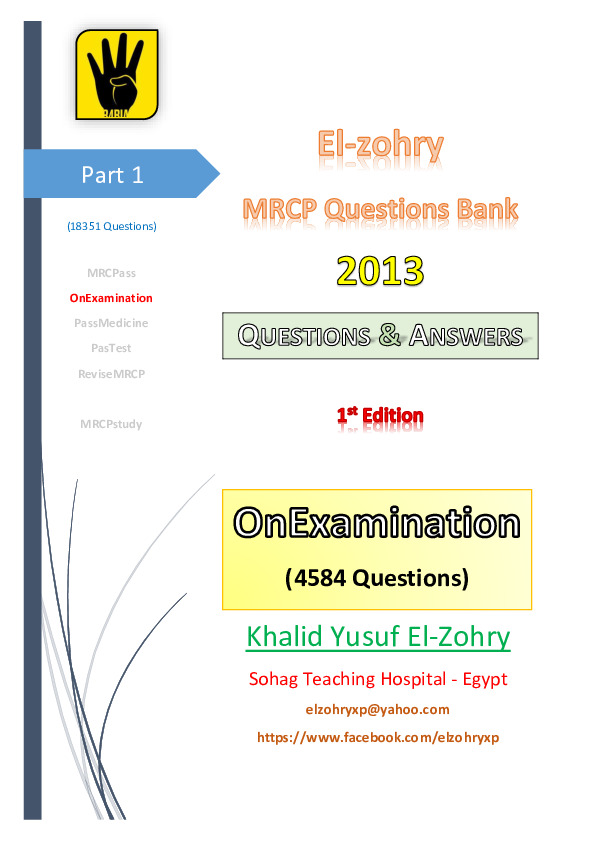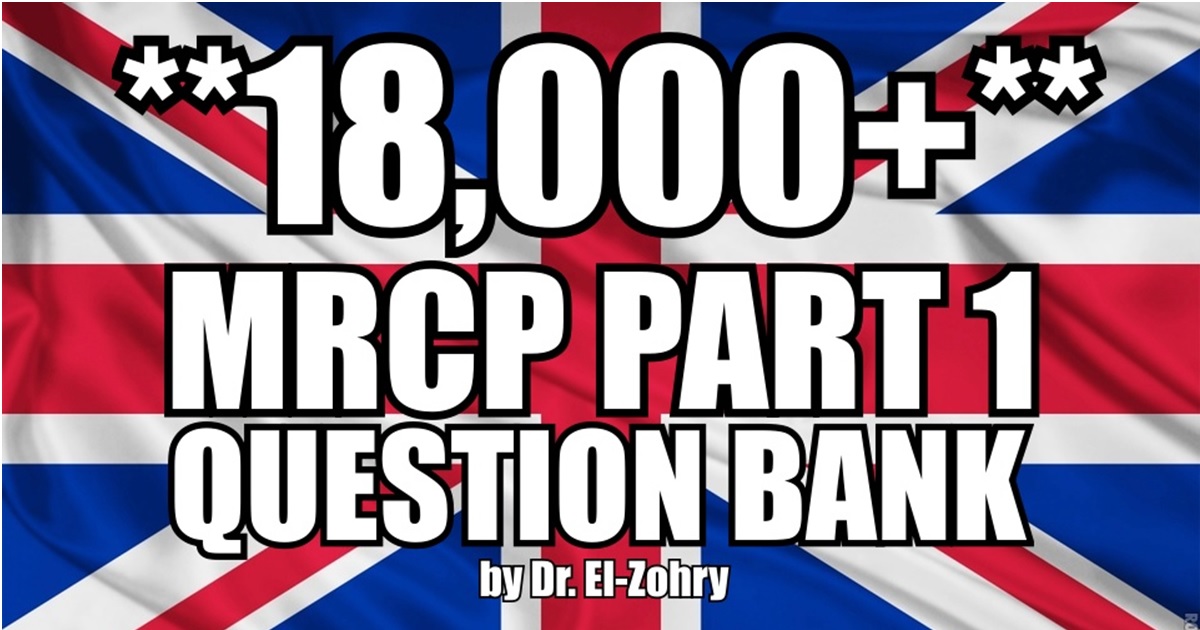Past Paper of MBBS Third Professional Exam – General Pathology (Solved)
Credits: Ejaz Ahmad (RMC)
Q-1. Questions regarding necrosis?
a) Define necrosis.
b) Enumerate its types. Give example of each
c) Which type is the most common and name the organ affected by it?
d) What are the morphological features of a necrotic cell?
e) Define the nuclear changes seen in necrotic cell nuclei
f) Write the morphology of each type of necrosis
ANS:
a) DEFINITION:
Necrosis is the type of cell death that is associated with loss of membrane integrity and
leakage of cellular contents, largely resulting from the degradative action of enzymes on
lethally injured cells. The leaked cellular contents often elicit a local host reaction, called
inflammation that attempts to eliminate the dead cells. The enzymes responsible for
digestion of the cell may be derived from the lysosomes of the dying cells and lysosomes of
leukocytes that are recruited in inflammatory response.
b) TYPES OF NECROSIS:
1) Coagulative necrosis, solid organs heart kidney
2) Liquefactive necrosis, central nervous Brain
3) Gangrenous necrosis, lower leg, abdominal viscera
4) Caseous necrosis, tuberculous infection i.e. lungs
5) Fat necrosis, pancreas (may be traumatic or enzymatic)
6) Fibrinoid necrosis, blood vessels wall.
c) MOST COMMON TYPE AND THE ORGAN AFFECTED BY IT:
Coagulative necrosis is the most common type of necrosis and the most affected organs are
the solid organs except the brain.
d) MORPHOLOGICAL FEATURES OF A NECROTIC CELL:
i) Cytoplasmic changes.
1) Necrotic cells show increased eosinophilia (i.e., pink staining), due to increased
binding of eosin to denatured cytoplasmic proteins and in part to loss of the
basophilia
2) More glassy due to loss of glycogen
3) Myelin figures are more prominent
4) Discontinuation of plasma and organelle membranes
5) Dilation of mitochondria
6) Disruption of lysosomes
7) Intra-cytoplasmic myelin figures
ii) Nuclear changes
1) Karyolysis (break down of DNA and chromatin by DNase activity)
2) Pyknosis (nuclear shrinkage and increased basophilia; the DNA condenses into a solid
shrunken mass)
3) Karyorrhexis, (the pyknotic nucleus undergoes fragmentation.)
4) Nucleus disappear in 1-2 days
iii) Other
Dead cells may be replaced by myelin figures which is either phagocytosed by other cells
or further degraded to fatty acids, fatty acids then bind to calcium salts and ultimately
become calcified.
e) NUCLEAR CHANGES SEEN IN NECROTIC CELL NUCLEI:
1) Karyolysis (break down of DNA and chromatin by DNase activity
2) Pyknosis (nuclear shrinkage and increased basophilia; the DNA condenses into a solid
shrunken mass)
3) karyorrhexis, (the pyknotic nucleus undergoes fragmentation.)
f) MORPHOLOGY OF EACH TYPE OF NECROSIS.
i) Coagulative necrosis
1) Underlying tissue architecture is preserved
2) Injury denatures structural proteins as well as enzymes, thereby blocking the
proteolysis of the dead cells
3) Eosinophilic, anucleate cells may persist for days or weeks.
4) Leukocytes are recruited to the site of necrosis, and digested dead cell through its
lysosomal enzymes.
5) The cellular debris is then removed by phagocytosis.
6) Coagulative necrosis is characteristic of infarcts (areas of ischemic necrosis) in all of
the solid organs except the brain.
ii) Liquefactive necrosis
1) Hypoxic death of cells within the central nervous system often evokes liquefactive
necrosis
2) Seen in focal bacterial or, occasionally, fungal infections,
3) The dead cells are completely digested, transforming the tissue into a liquid viscous
mass.
4) Eventually, the digested tissue is removed by phagocytes.
5) In case of acute inflammation, as in a bacterial infection, the material is frequently
creamy yellow and is called pus.
iii) Gangrenous necrosis
1) It usually refers to the condition of a limb, generally the lower leg that has lost its
blood supply and has undergone coagulative necrosis involving multiple tissue layers.
2) When superimposed by bacterial infection,
3) Coagulative necrosis is modified by the liquefactive action of the bacteria and the
attracted leukocytes (wet gangrene).
4) Gangrenous necrosis may be Dry gangrene, Gas gangrene and Wet gangrene as
mention above.
iv) Caseous necrosis
1) Encountered most often in foci of tuberculous infection i.e lung
2) Caseous means “cheese-like,” yellow-white appearance of the area of necrosis
3) Collection of fragmented or lysed cells with an amorphous granular pink appearance.
4) Unlike with coagulative necrosis, the tissue architecture is completely obliterated and
cellular outlines cannot be discerned.
5) The area of caseous necrosis is often enclosed within a distinctive inflammatory
border (granuloma)
v) Fat necrosis
1) Refers to focal areas of fat destruction, typically resulting from release of activated
pancreatic lipases into the substance of the pancreas and the peritoneal cavity
(pancreatitis).
2) pancreatic enzymes liquefy the membranes of fat cells in the peritoneum, and lipases
split the triglyceride esters
3) The released fatty acids combine with calcium to produce grossly visible chalky white
areas (fat saponification)
4) The foci of necrosis contain shadowy outlines of necrotic fat cells with basophilic
calcium deposits, surrounded by an inflammatory reaction.
vi) Fibrinoid necrosis
1) Immune reactions in which complexes of antigens and antibodies are deposited in the
walls of arteries.
2) The deposited immune complexes, together with fibrin that has leaked out of vessels,
produce a bright pink and amorphous appearance on H&E preparations called
fibrinoid
3) The immunologically mediated diseases (e.g., polyarteritis nodosa) in which this type
of necrosis is seen.
Next Question





